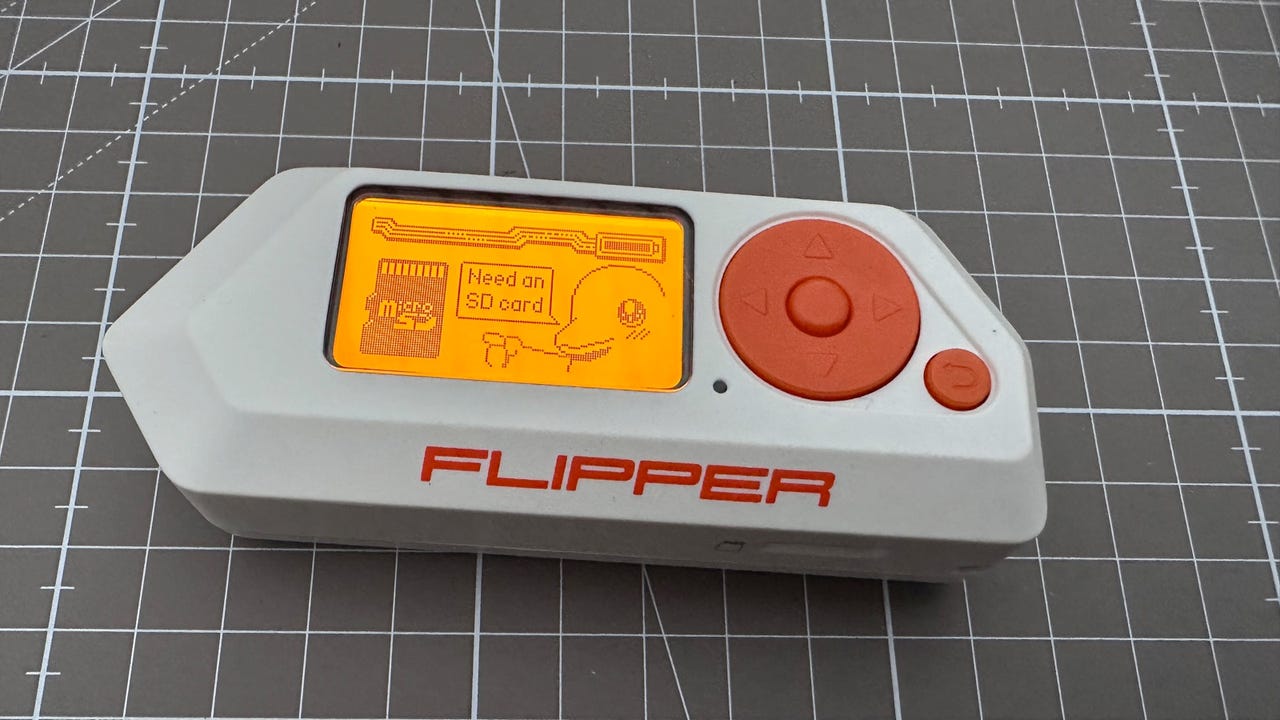
Flipper Zero: How to install third-party firmware (and why you should)


Flipper Zero – Looks like a toy, but underneath that plastic shell is a powerful hacking/pen-testing tool that costs only $169
Adrian Kingsley-Hughes/ZDNET
I’ve been having a lot of fun with my Flipper Zero — the all-purpose, pocket-sized hacking and penetration testing tool that looks like a kid’s toy. If you’re not sure what a Flipper Zero is or what it can do, I suggest reading my Flipper Zero primer and the Flipper Zero FAQ I put together first.
Also: Flipper Zero: Geeky toy or serious security tool?
I also mentioned that there’s a flourishing third-party software ecosystem for the Flipper Zero, where you can download and install a number of different firmware options for your Flipper Zero. That post generated a lot of questions I’m now here to answer.
Out of the box, the Flipper Zero has a lot of capability.
There’s a built-in infrared transceiver that can both capture and transmit IR codes to control things like TVs.
There’s a sub-GHz wireless antenna that can again capture and transmit wireless codes to operate wireless devices and access control systems, such as garage door remotes, boom barriers, IoT sensors and even remote keyless systems.
Also: 3 security gadgets I never leave home without
It can read, store, and emulate EM-4100 and HID Prox RFID cards.
The Flipper Zero can also read, write, store, and emulate NFC tags.
On the front, there’s a 1-Wire connector that can read and emulate iButton (aka DS1990A, CYFRAL, Touch Memory or Dallas key) contact keys.
Finally, on the top there are GPIO connectors that allow the Flipper Zero to connect to other gadgets in the real world, such as the Wi-Fi development board.
While firmware can’t change the underlying hardware, it can change the look, feel, and functionality of the Flipper Zero.
For example, it can change the look and feel of the UI (user interface), add a whole bunch of new presets and features to work with sub-GHz wireless and NFC, add a bunch of ready-made remote controls to the IR tool, add new games and apps, fix bugs, and a lot more.
Also: Best gifts for your favorite hacker
Basically, you can get your Flipper Zero to do more for no cost to you (other than learning how to install the firmware).
Third-party firmware is encouraged by the makers of the Flipper Zero.
While there is a risk you could damage the device by messing with configuration files, this is not something that can happen by installing the firmware — you have to make changes that are specifically discouraged.
I suppose anything is possible but I’ve swapped between different Flipper Zero firmware for a few weeks now with no ill effects at all. The process is robust and reliable.
If you’re not ready to install custom third-party firmware just yet, but you do want to update the firmware that came pre-installed, here’s what you need to do.
Download and install the Flipper Mobile app available for iPhone or Android, or download qFlipper for Windows, macOS, or Linux.
Also: This has replaced my multitool for a fraction of the cost
Connect the Flipper Zero to your smartphone using Bluetooth, or desktop or laptop using USB.
Fire up the app, and the home screen will show you if there are updates.
qFlipper – no updates available for my Flipper Zero
Adrian Kingsley-Hughes/ZDNET
I suggest starting with DarkFlipper Unleashed.
This will give you the familiarity of the firmware that came with the Flipper Zero, but add features — such as extending the sub-GHz frequency range by removing geo-location blocks and adding a lot of NFC-related features, as well as a bunch of fun things like games.
Also: This must-have screwdriver has two cool hidden tricks
You have a few options listed here. I recommend using the Web Updater method outlined — you connect your Flipper Zero to your desktop or laptop, or via the iOS/Android app.
There’s a lot of new stuff to explore and it should take you a lot further on your journey to “hack the planet”!
Another cool third-party firmware that I’ve been using is Flipper Xtreme. This adds a lot of new things to experiment with, such as NFC protocols, an exploit for a Honda keyless entry hack, signal jammers, an improved UI, and a bunch of bug fixes and optimizations.
The reason I don’t recommend this firmware for those just starting out is that there are things here that might get you into trouble if you don’t know what you are doing.
Flipper Xtreme in action
Adrian Kingsley-Hughes/ZDNET
Yes.
You’re getting a tool with a built-in sub-GHz wireless functionality, the ability to work with NFC, RFID, IR, and GPIO to connect to hardware projects.
That’s a lot for the $169 price tag.
Also: These are my 3 must-have Raspberry Pi accessories
But there’s more to the Flipper Zero than the hardware. It’s the learning that goes with it — you’ll be downloading code from GitHub, installing firmware, learning what the features do, and perhaps writing some code of your own.
This is a brilliant platform for delving deeper into technology, and perhaps opening career doors in security or IT admin.
Flipper Zero is an affordable way to explore and experiment with NFC and RFID technologies
Adrian Kingsley-Hughes/ZDNET
I like the Wi-Fi development board.
It opens up a lot of Wi-Fi analysis possibilities, paving the way for more learning and projects.
Source: https://www.zdnet.com/article/flipper-zero-how-to-install-third-party-firmware-and-why-you-should/#ftag=RSSbaffb68


















